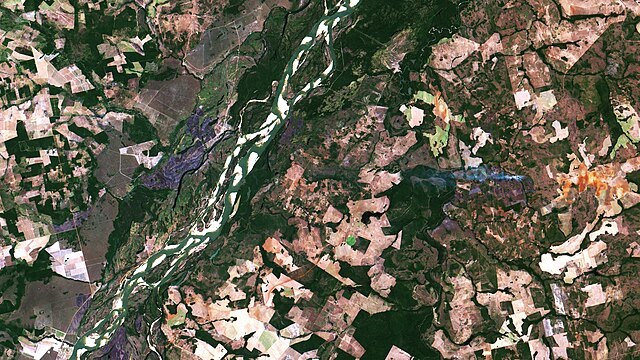The bearded sakis, or cuxiús, are five or six species of New World monkeys, classified in the genus Chiropotes. They live in the eastern and central Amazon in South America, ranging through southern Venezuela, Guyana, Suriname, French Guiana and northern and central Brazil. The species are entirely allopatric, their distributions being separated by major rivers.
Bearded saki
White-nosed saki (Chiropotes albinasus).
The black bearded saki is a species of New World monkey, native to the Amazon rainforest of South America, specifically to an area of north-eastern Brazil. It is one of five species of bearded saki. Bearded sakis are medium-sized (50 cm), mostly frugivorous primates, specialised in seed predation. The genus name Chiropotes means "hand-drinker" as they have been observed using their hands as ladles for scooping water into their mouths. This behavior is thought to be a way of maintaining and protecting their characteristic beards. The black bearded saki's habitat has undergone heavy habitat fragmentation, making the future conservation status of the species uncertain.
Black bearded saki
Chiropotes skull showing teeth adaptation for hard seed predation.
Satellite image showing anthropogenic impact on Araguaia River basin, between Pará e Tocantins




